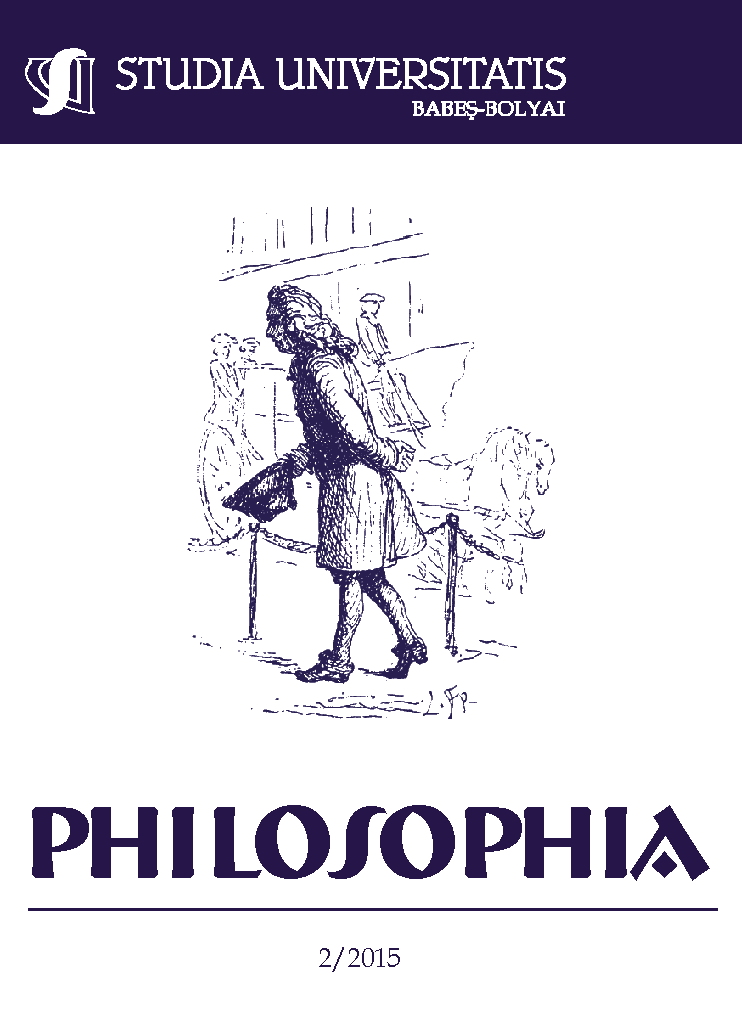HERMENEUTICAL PHENOMENOLOGY AND THE STUDY OF ART: A NOTE ON INTERDISCIPLINARITY
Keywords:
art history; aesthetics; philosophy of art; phenomenology of art; Martin Heidegger; John Dewey; aesthetics of everyday life; Steve FullerAbstract
On the grounds that art cannot be subsumed anymore to the principles that have provided it with a certain sense of unity throughout history and that an ideal notion of art can no longer be defended, this paper investigates the hermeneutic and pragmatic roots of the recent philosophical current of “everyday aesthetics” in order to determine a baseline for the study of art. After pointing out the so-called “destructive” dimension of hermeneutical phenomenology, the paper counters the idealistic approach to art and concludes that art may and should be reintegrated within the lived life of a historically-determined community and cultural context. A key finding of the paper consists in declaring the interdisciplinary potential of the latter idea, which parallels Steve Fuller’s critique of interdisciplinarity as mere departmental flexibility and adaptability.References
Adorno, Theodor. Aesthetic Theory. London & New York: Continuum, 2002.
Belting, Hans. L’histoire de l’art, est-elle finie? Histoire et archéologie d’un genre. Paris: Gallimard, 2007.
Danto, Arthur C. “The Artworld,” in The Journal of Philosophy 61, no. 19 (1964): 571-584.
__________. The Philosophical Disenfranchisement of Art. New York: Columbia University Press, 1986.
Dewey, John. Art as Experience. New York: G.P. Putnam’s Sons, 1980.
Dickie, George. Art and Value. Malden, MA & Oxford: Blackwell Publishers, 2001.
Fuller, Steven. Thomas Kuhn: A Philosophical History for Our Times. Chicago: University of Chicago Press, 2000.
__________. “Interdisciplinarity: The Loss of the Heroic Vision in the Marketplace of Ideas.” Accessed on October 14th, 2009, from www.interdisciplines.org/interdisciplinarity/papers/3 and on February 29th, 2012, from http://www.beiwang.com/bbs/showtopic.aspx?topicid=3679&page=end.
Hainic, Cristian. “A Few Uses of Phenomenology within Art History.” In Journal for Communication and Culture 1, no. 1 (spring 2011): 70-8.
Haapala, Arto. “On the Aesthetics of the Everyday: Familiarity, Strangeness, and the Meaning of Place” in The Aesthetics of Everyday Life, edited by Andrew Light and Jonathan M. Smith, 39-55. New York: Columbia University Press, 2005.
Heidegger, Martin. “Words,” in On the Way to Language, translated by Peter D. Hertz, 139-156. New York: Harper & Row, 1982.
__________. Being and Time. Translated by Joan Stambaugh. Albany, NY: State University of New York Press, 1996.
__________. Ontology – The Hermeneutics of Facticity. Translated by John van Buren. Bloomington & Indianapolis: Indiana University Press, 1999.
__________. “The Origin of the Work of Art,” in Poetry, Language, Thought, translated by Albert Hofstader. New York: Harper & Row, 2001.
Mattick, Paul. Art in Its Time. New York: Routledge, 2003.
Michaud, Yves. L’art à l’état gazeux. Essai sur le triomphe de l’esthétique. Paris: Stock, 2003.
Moulin, Raymonde. L’artiste, l’institution et le marché. Paris: Flammarion, 1997.
Ricoeur, Paul. “Phenomenology and Hermeneutics.” In Noûs 9, no. 1 (March, 1975): 85-102.
__________. From Text to Action: Essays in Hermeneutics II. Evanston: Northwestern University Press, 1991.
Rorty, Richard. “Overcoming the Tradition: Heidegger and Dewey,” in Heidegger and Modern Philosophy, edited by Michael Murray, 239-58. New Haven & London: Yale University Press, 1978.
__________. “Witgenstein, Heidegger, and the Reification of Language,” in The Cambridge Companion to Heidegger, edited by Charles B. Guignon, 337-57. Second edition. New York: Cambridge University Press, 2006.
Saito, Yuriko. Everyday Aesthetics. New York: Oxford University Press, 2007.
Sartwell, Crispin. “Aesthetics of the Everyday,” in The Oxford Handbook of Aesthetics, edited by Jerrold Levinson, 761-70. New York: Oxford University Press, 2005.
Sedlmayr, Hans. “Problema timpului” (“The Problem of Time”), in Epoci şi opere: studii de istoria şi teoria artei (Romanian translation of Epochen und Werke: Gesammelte Schriften zur Kunstgeschichte), translated by Mircea Popescu. Bucharest: Meridiane, 2001.
Downloads
Published
How to Cite
Issue
Section
License
Copyright (c) 2015 Studia Universitatis Babeș-Bolyai Philosophia

This work is licensed under a Creative Commons Attribution-NonCommercial-NoDerivatives 4.0 International License.





